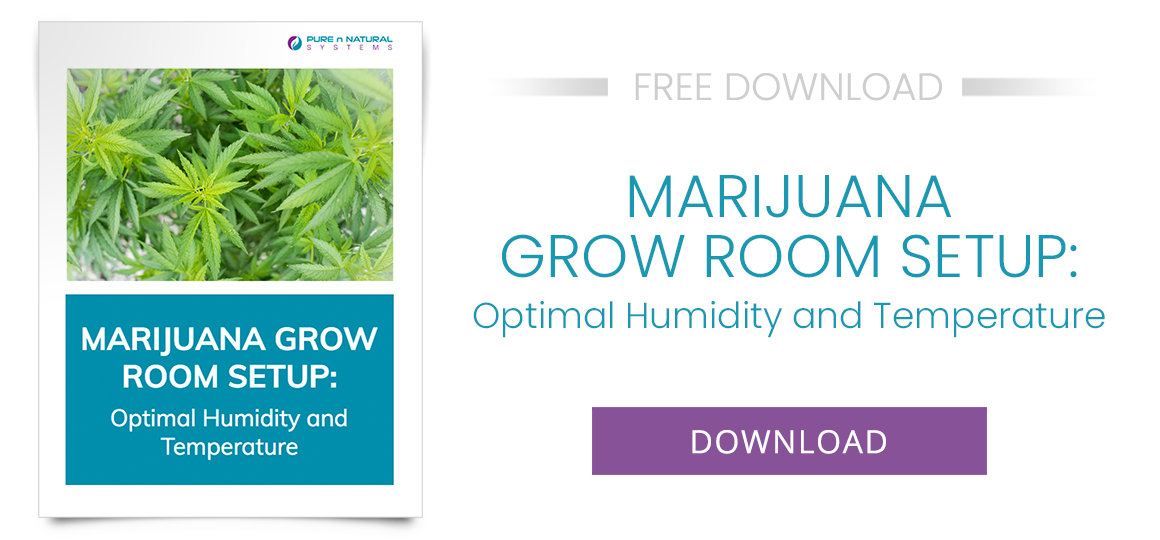 For many first-time growers, humidity is a complete mystery. With things like temperature, ventilation and nutrient levels occupying all their time, the importance of humidity gets lost in the mix. But what if I told you that understanding and controlling humidity at the right stages of plant development would improve potency, flavor, density and overall yields? Interested? Of course you are! Humidity is the key to next-level grower status and we’re going to teach you all about it right here.
For many first-time growers, humidity is a complete mystery. With things like temperature, ventilation and nutrient levels occupying all their time, the importance of humidity gets lost in the mix. But what if I told you that understanding and controlling humidity at the right stages of plant development would improve potency, flavor, density and overall yields? Interested? Of course you are! Humidity is the key to next-level grower status and we’re going to teach you all about it right here.
What Is Humidity?
When we say humidity, for our purposes, we’re actually referring to “relative humidity,” or RH.
Very simply, RH is the current amount of water vapor in the air versus how much it could hold at the same temperature. Which is a long way of saying: warm air can hold more water than cold air, so warmer air means higher RH.
But understanding how temperature interacts with humidity levels is only half of the equation. The water still has to come from somewhere to evaporate into the air in the first place. Fortunately for us (or unfortunately, if you’re struggling with too much RH), we have lots of water on hand thanks to our plants. Once plant roots are fully developed, everything that goes into the plant comes out of the plant through evaporation as a way for the plant to keep its leaves cool. But remember, unlike a hot shower and fogging up a mirror, the evaporated water from your plants doesn’t increase the room’s temperature, just the amount of water suspended in the air.
As an example: if you’re watering a total of 30 gallons in a day and 10 gallons of that goes down the drain, then you can expect 20 gallons of water to be released by your plants into the air. Now you might be asking, “Is that a good thing or a bad thing?” Good question.
Is There a Right Amount of Humidity?
Yes, but it’s not a one-size-fits-all number you should be aiming for throughout the growing cycle. Instead, consider for a moment the conditions your plant would experience if it were growing wild outdoors. Depending on where you are, you might have a wet spring, followed by a warm humid summer, then tapering off to cooler weather and low humidity come harvest time. This is the general effect you should be trying to replicate indoors. The whole point of indoor growing is being able to reproduce a perfect growing season time-and-time again.
So to answer the question, it’s not really about what is the right amount as when is the right amount.
This was discussed at length in a previous blog post with additional tips for how to raise and lower RH levels, but it’s worth giving the CliffsNotes version here for you as well.
| Stage of Growth | Humidity | Temperature |
| Seedling | 65-70% | 68-77 F° |
| Vegetative | 40-70%* | 71-82 F° |
| Flowering | 40-50% | 68-79 F° |
| Late Flowering | 30-40% | 64-75 F° |
*Reduced by 5% weekly until proper levels are reached.
How to Control Humidity
For grow rooms of all sizes, being able to raise or lower RH on demand is extremely important for maintaining a consistent quality level. So now that you know what the ideal numbers are for each stage, how do we achieve this? There are a couple tools no grow room should be without:
- Thermo Hygrometer
- Humidifier(s)
- Dehumidifier(s)
- Air Conditioner(s)
- Fans
Thermo Hygrometer: Measures both humidity and temperature of the air. Many digital models can even store previously collected measurements that can be transferred to a computer for additional analysis and careful record keeping.
Humdifier(s): These are used in the first four weeks to promote vigorous seedling/cutting growth for improved yields later. Also, because outside air is used to refresh grow room air, areas with very arid outside conditions can benefit from a humidifier or series of strategically placed humidifiers throughout the growing cycle.
Dehumidifier(s): No commercial-sized grow room is complete without a handful of dehumidifiers on hand. Smaller grow rooms should be no different but the cost ratio of production to equipment expenses can sometimes lead to tough decisions being made. Most grow rooms typically deal with an excess of humidity at one time or another, so if corners are being cut this is probably not the place to do it as lowering humidity during flower/late flowering stages has a big impact on density, flavor and potency of the ripened buds.
Air Conditioner(s): Another way to remove humidity is through air conditioners, with the benefit of also lowering temperatures. Just be sure to remember that as the air becomes cooler it can’t hold as much water vapor meaning lower RH so you’ll want to watch your levels to make sure they don’t abruptly drop too low.
Fans: The backbone of every grow room is an army of fans. Strategically placed, they circulate air inside the space to get an even humidity and temperature level throughout so climate changes in one area then affect every other area. This allows you to only need one centrally placed measurement tool that then regulates external ventilation fans and any other humidifiers, dehumidifiers and air conditioners you have in place.
If you're looking for a comprehensive resource on growing your crops beyond humidity, check out our online guide, Marijuana Grow Room Setup: Optimal Humidity and Temperature.




![4 Ways Indoor Humidity Can Cause Problems For Your Business [2025 UPDATED]](https://blog.purennatural.com/hubfs/a%20factory%20with%20extreme%20humidity%2c%20showing%20condensation%2c%20heavy%20air%2c%20and%20workers%20struggling%20with%20the%20damp%20environment.webp)
